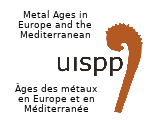Irrigation and related water management are ancestral practices, dating back to Antiquity. They allowed societies to overcome harsh environmental conditions, such as those of Middle Eastern arid and semi-arid areas, and upgrade to a superior stage of civilization, the “hydraulic societies” of Iran and Oman being among the best examples. Qanats in Iran are sustainable ancestral constructions providing fresh water to communities of users by draining groundwater from aquifers through underground tunnels. On their path are connected watermills, dwellings and urban facilities such as water reservoirs and religious edifices. For P. W. English, the technique originated 2,500 years ago in the highlands of western Iran, northern Iraq, and eastern Turkey. The aflaj of Oman are historic environmentally friendly water acquisition and irrigation systems conveying groundwater, rainwater and runoff water through gravity. P. M. Costa relates aflaj technology to the copper mining knowledge and techniques employed in the mid-3rd millennium BC in ancient Oman. Aflaj water community-based management involves a specific social structure and adapted ad hoc rules. Nowadays, social involvement and relationship engaging various generations toward aflaj systems is still shown among the locals. A survey for a socio-cultural and environmental framing, as a part of a PhD research project (2018), identified six different typological groups regarding their behavior toward aflaj systems. This paper highlights physical and social aspects of qanats and aflaj and traces the transmission of the technique over time and extra region by pointing to some similar systems in North Africa and Europe.

 PDF version
PDF version
